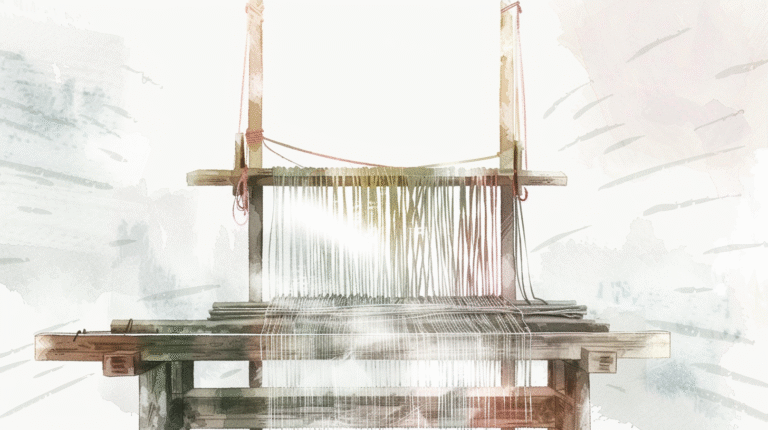Allowance vs Suppression: Nervous System Healing Through Permission, Not Pressure
The Conflict Beneath the Fatigue
So many people who live with trauma, chronic illness, or nervous system dysregulation describe a similar frustration: “I’m exhausted, but I can’t rest.” Or, “I finally slow down — and still don’t feel better.” Underneath the surface of that fatigue is often something more than tired muscles or low energy. There’s a deeper conflict — one between the body’s need to pause, and a nervous system that doesn’t yet feel safe enough to allow it.
If this feels familiar, it’s not because you’re lazy. It’s not a lack of discipline. And it’s not a mindset flaw. Often, it’s the result of an internal system that learned — usually very early on — that pushing through meant survival, belonging, or safety. Rest may be desired, even craved, but the act of allowing that rest can feel like a threat. A loosening. A loss of control.
This post is about understanding that experience — and offering a different lens: one that recognizes allowance not as weakness or giving up, but as a nervous system skill. A form of deep internal permission that makes space for needs, feelings, boundaries, and rest — without guilt. One breath, one “no,” one messy pause at a time.
What Is Allowance, Really?
Allowance is not just a mindset. It’s a somatic capacity — the ability of your nervous system to say: “This moment is safe enough to feel, to pause, to receive, to exist without effort.” Allowance happens not when we force ourselves to “let go,” but when our system softens enough to let be.
Imagine a clenched fist slowly opening. Or a hand relaxing its grip on the steering wheel. That’s allowance: the moment the system no longer feels it has to control everything to stay alive. It’s not passive. It’s deeply active. It’s a turning toward life with enough safety to loosen the old armor — just slightly.
Allowance includes rest, but it’s more than rest. It includes feeling, but it’s more than emotional expression. It’s about granting internal permission to say no, to need help, to stop overexplaining, to leave something undone, to not brace.
And the truth is, many of us don’t realize how often we’re bracing. How much tension and tightness are layered into our attempts to feel “in control.”
What Suppression and Control Look Like in the Body
Suppression is not always obvious. It doesn’t only show up as emotional shutdown. It’s in the way we grip the steering wheel on the way to work. It’s in the smile that stays fixed during an uncomfortable conversation. It’s in the “I’m fine” that bypasses a deeper truth. Suppression is effort. It’s survival strategy.
In the body, suppression can look like:
- Clenching your jaw while saying “yes” when you mean “no”
- Pushing through exhaustion to avoid feeling “lazy”
- Tensing your body before asking for help
- Breathing shallowly when emotions come up
- Smiling when your chest feels like crying
This isn’t dysfunction. It’s intelligence. Most of us learned — often very young — that certain emotions, needs, or behaviors were unsafe or unacceptable. We learned to contort ourselves to fit the environment. That contortion becomes a baseline. We forget what it feels like to allow.
Survival Strategies: Suppression as Intelligence
This part is important. Suppression isn’t a mistake. It’s a protective adaptation. If you grew up in a high-pressure, chaotic, or emotionally neglectful environment, you may have learned that expressing emotion, needing care, or slowing down came at a cost. Maybe you were shamed. Ignored. Punished. Maybe your nervous system just never got the chance to feel safe being visible.
In those environments, suppression wasn’t weakness. It was wisdom. It kept you in connection. It kept you safe. The only problem is — what once protected you, now imprisons you. You push through everything, not because you don’t know how to rest, but because your system still associates slowing down with risk.
The good news? That pattern can shift — not through force, but through curiosity.
Allowance Is Not Collapse
Let’s clear up a common fear: Allowance is not the same as giving up. It’s not collapse. It’s not helplessness. It’s not abandoning your responsibilities or your relationships. In fact, allowance is often the strongest and most regulated stance your nervous system can take.
Collapse feels like: “I’m numb, checked out, can’t cope.”
Allowance feels like: “I’m here. I’m noticing. I’m letting this be what it is.”
You can allow rest and still care about your goals. You can allow emotion and still have boundaries. You can allow your limits without becoming less generous, less capable, or less connected.
Allowance creates a new kind of agency — one that’s not based on override, but on relationship. One that honors your humanity, your timing, and your needs.
The Body’s Role in Learning to Allow
Allowance isn’t something you think your way into. It’s something your body learns to feel safe enough to practice. Suppression requires muscular effort, vigilance, and tightness. It’s a high-alert state — often rooted in sympathetic arousal (fight/flight) or freeze responses (shutdown). Even at rest, your system might be scanning for danger.
To allow — to truly soften — your system needs to shift. That might include:
- A slower, fuller breath
- A relaxed jaw or softened belly
- A drop in internal urgency
- The felt sense of “I don’t have to fix this right now”
These are signs that your parasympathetic system is coming online — especially the ventral vagal branch, which supports safety, connection, and recovery. Somatic practices that support interoception, grounding, and gentle co-regulation can help build this capacity.
Micro-Moments of Allowance That Change Everything
You don’t have to overhaul your life to practice allowance. In fact, nervous system change happens best in small, repeated, safe-enough moments. Try noticing:
- The moment you allow yourself to nap, even if the dishes aren’t done
- The moment you choose to not respond to a message until you’re ready
- The moment a tear surfaces and you don’t apologize for it
- The moment you feel overwhelmed and step outside the room
- The moment you let the house stay messy because your body says “not today”
These aren’t just acts of self-care. They’re acts of nervous system retraining. Each one whispers: “You’re safe enough now to choose differently.”
Why This Work Can Feel So Hard (And That’s Okay)
If allowance feels impossible, that doesn’t mean you’re doing something wrong. It means your system has been protecting you for a very long time. Rest can feel terrifying. Softness can feel like exposure. Saying no can feel like abandonment. These aren’t mindset blocks — they’re embodied survival strategies.
You might feel inner conflict: the part of you craving rest vs. the part that panics at the idea. The part of you that wants to feel emotions vs. the part that learned it’s safer to stay numb. That tension is normal. It’s not failure — it’s the next doorway to explore.
Building a Nervous System Capacity for Allowance
Allowance is a capacity you build slowly — like strengthening a new muscle, or learning a new language. It’s not about forcing rest or forcing vulnerability. It’s about offering your system repeated, gentle evidence that it’s safe enough to let go.
Some ways to begin:
- Titrate: Start small. Choose one moment per day where you soften the grip.
- Co-regulate: Let safe others help your system downshift — through presence, not pressure.
- Name it: Say internally, “This is a moment of allowance.” Let your body know what’s happening.
You don’t have to be perfectly calm to practice allowance. You just have to be willing to let in a little less resistance than before.
Conclusion: You Don’t Have to Earn This
Rest is not something you earn by being productive. Boundaries are not selfish. Feelings are not flaws. These aren’t indulgences — they’re human rights. And for many of us, they are skills the nervous system is still learning to trust.
You don’t have to push yourself to the edge of collapse to deserve a pause. You don’t have to justify your no. You don’t have to feel safe all the time to begin allowing something — one breath, one choice, one shift in posture.
Allowance isn’t a destination. It’s a nervous system practice. One that builds over time, with care and compassion and repetition. And you don’t have to do it alone. If you’re looking for support, language, or community to make this journey feel more possible, NeuroNurture offers a space to begin — where softness is strength, and rest is welcome.
FAQs
Is allowance the same as giving up?
Not at all. Giving up often feels like collapse or despair. Allowance is intentional and present — it’s a nervous system shift toward permission, not apathy. It may look like stillness on the outside, but internally, it’s often the bravest move.
How do I practice allowance without feeling selfish?
Start small and notice what comes up. Allowing yourself to nap, say no, or ask for space can feel selfish if your system was conditioned to overfunction. That discomfort is often a sign you’re stepping out of an old role — not doing harm.
Why does rest make me anxious?
Because your system may not associate rest with safety. If survival meant staying alert or useful, rest can trigger fear of failure, rejection, or even danger. The key is to build tolerance for rest gently, and to work with—not against—your body’s pace.
What if my nervous system doesn’t feel safe enough to allow?
That’s completely valid. Allowance isn’t about pushing through fear — it’s about respecting what your body is trying to protect. Begin with micro-moments of safety: a deeper breath, a supportive touch, a pause in silence. Let safety build from the inside out.
Can I learn allowance if I’ve always lived in survival mode?
Yes. Even if your system has spent years in high alert or freeze, it can learn. Neuroplasticity and somatic healing show us that our nervous systems are changeable. It takes time, support, and compassion — but healing isn’t out of reach. It’s already in motion.







